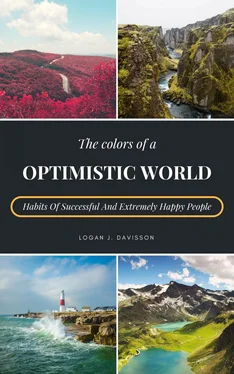Insight into buying addiction itself
As a rule, a distinction is made between people who are addicted to shopping and those who are at risk of becoming addicted to shopping. If, for example, you find yourself in many of the symptoms and characteristics mentioned, but have not yet completely lost control over your purchasing behavior, you may be at risk of becoming addicted to shopping. Since shopping addiction goes through different phases and comes creepingly, people who frequently reward themselves with purchases should therefore keep an eye on their buying behaviour.
Buying addiction can basically be divided into three phases. In the first phase the joy about the purchased product still dominates and the act of purchase itself is secondary. However, this weighting increasingly shifts and the joy disappears and the act of purchase itself becomes the centre of attention. At this point, the aforementioned misdirected reward has already taken place in the brain. The act of purchase now releases the euphoric hormones. In the second phase there is a loss of control. The person concerned buys without measure and clearly exceeds his financial possibilities. In the third phase, the financial situation is already hopeless and the affected person recognizes above all his financial imbalance. However, he is incapable of freeing himself from this situation.
At this point it is important to understand that at the beginning of the buying addiction the person concerned is still enjoying his addiction and shopping and may even be happy about the things he has bought. Only when a certain amount of suffering arises as a result of the loss of control does the addiction to shopping begin to become a problem for the person concerned. A typical characteristic of people is that they want to have control over themselves and their lives. A permanent remote control through an uninfluenceable component such as shopping addiction is therefore tormenting for almost everyone.
If unused goods and products accumulate in the cellar or living quarters or the first reminders from the bank flutter into the house, relatives will be pricked up at the latest. In the run-up to the sale, the first lies or contradictory behaviour can already have made the partner or friends suspicious, especially with separate living rooms or separate cellar compartments, the shopping addiction can be concealed over a longer period of time. Some people also give away their purchased goods, so that the extent of the loss cannot be determined and can thus be hidden for even longer.
Buying addicts often develop a feeling very quickly that their behaviour is compulsive and, above all, pointless. Of course, they are not unaware that they have ten different mobile phones in their bedroom, of which only one is in use, or that four televisions in the basement are not necessary. The main reasons are the precarious financial situation, the frustration after shopping and the guilty conscience due to the pointless spending of money. Shame prevails and shopping addiction is swept under the carpet for a long time. The incipient insight into buying addiction can drive the person concerned even further into addiction. The distraction of shopping can cause another shopping frenzy to suppress the feelings of despair and personal inability or even inadequacy for a brief moment.
Thus, in the first place, there is no insight into shopping addiction itself, the problem is known to those affected and suffering pressure exists. Much more the insight must take place that their illness cannot be mastered without foreign assistance from the outside. As a first important step they have to learn to reduce their sense of shame and to become aware of addiction in all its facets.
If the obligation to buy is very pronounced, those affected cannot manage to escape this obligation permanently without outside help. Friends and family should carefully and above all empathetically seek the conversation, without throwing accusations around. If the affected person is in an unstable and depressive state, he needs outside support, as he is no longer able to free himself from this misery. For self-protection, some first aid measures should be observed in order to protect the person concerned from himself. If thoughts are expressed that point to self-endangerment in the form of self-injury or even statements about suicide, it may even be necessary to treat the affected person in hospital for a certain period of time. It should be noted that this description is not intended to panic, but only the extreme case. Buying addicts do not have to compulsively develop suicidal thoughts due to their overall mental condition. However, if there are strong accompanying symptoms or if the shopping addiction is clearly based on a psychological problem, an inpatient stay for shopping addicts can be a sensible option.
Shopping addiction is an addictive disorder
At the beginning of this guide it was mentioned that shopping addiction, unlike drug or alcohol addiction, is not recognised by the World Health Organisation as a separate disease. It is medically counted as an impulse control or obsessive-compulsive disorder and is not listed for addictions. Efforts are being made to change this, but this has not yet been achieved. Psychologists, however, argue that pathological behaviour should be considered an addictive disease because of its effects on the psyche and life.
An addiction is generally understood to be dependence on substances or behaviours. An addiction is a learned behaviour in which the affected person repeatedly rewards himself for his destructive behaviour. It takes place in three phases, in the first phase there is a loss of control, then tolerance development and withdrawal symptoms. An addiction is characterised by a vicious circle in which the various factors reinforce each other and ensure that the person concerned is pulled further and further downwards. It has already been mentioned that the loss of control when shopping has a euphoric effect on shopping addiction. The development of tolerance is triggered by the chemical processes in the brain, which, among other things, ensure that the person concerned has to buy ever larger quantities or increasingly expensive products. Withdrawal symptoms are becoming more frequent as a result of the development of tolerance, which is driving the addicted shopper more and more frequently to comply with his addiction.
The fatal thing about shopping addiction is that there are three vicious circles that exist side by side. Once a vicious circle that includes all psychosocial factors such as friends, family, job and the financial consequences. Then there is the somatic vicious circle, which addresses the process already described, which takes place in the brain and causes the physical withdrawal symptoms. And last but not least the intrapsychic vicious circle, which contains the negative self-perception. In sum and individually, these three vicious circles all have the same effect. They lead to conflicts with oneself and the environment and aversions. An aversion is a rejection, in this case mainly against oneself and against the environment. The result is a desire to numb these feelings: the affected person goes shopping, distracts himself from his worries and problems and feels a certain relief. He has completely unconsciously rewarded himself for his self-destructive thoughts and is still in the vicious circle and the downward spiral. Because with every shopping tour he rewards himself again, which leads to bigger problems on all three levels mentioned. Basically, the addict hates himself for this behavior, but he is incapable of freeing himself from it. This hatred then leads to another shopping tour and worsens the problem step by step.
In a behavioral addiction such as shopping addiction, the addict rewards himself again and again with his excessive shopping moves and is unable to keep control over his behavior. He can neither limit himself in the quantity of his purchases nor is he even able to cancel a purchase at all. Many shopaholics described their shopping frenzy as a film that they experience and in which they act as if standing next to themselves in delusion.
Читать дальше












